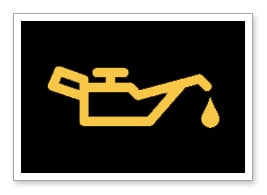Tech Tip: 3 Easy Ways to Extend Chuck Life
 One of the unsung heroes of CNC machining is the 3-jaw chuck that is standard equipment on many CNC lathes and turning centers. The chuck is the principal workholding device and is essential for maintaining accuracy and enabling the machine tool to perform at optimum RPM.
One of the unsung heroes of CNC machining is the 3-jaw chuck that is standard equipment on many CNC lathes and turning centers. The chuck is the principal workholding device and is essential for maintaining accuracy and enabling the machine tool to perform at optimum RPM.
What some don’t stop to consider is how many moving parts this seemingly simple apparatus contains, and the importance of maintaining proper lubrication of these parts. Typically, the chuck jaws open and close via the action of a piston within an hydraulic actuator connected to the chuck by a drawtube. The back-and-forth motion of the piston drives a plunger inside the chuck body to open and close the jaws so that it grips the work piece with appropriate force.
Clearly, if all of these moving parts aren’t properly lubricated, the resulting friction will develop areas of wear on the chuck. This can create out-of-tolerance parts, scrap and rework. Not to mention thousands of dollars in unnecessary expense to replace a badly worn or damaged chuck.
Therefore it is critical to maintain a regular maintenance schedule that includes daily lubrication. A few things to remember about maintaining chucks:
- Schedule regular lubrication. There are a series of grease fittings located on the chuck housing. Each of these should be regularly replenished with lubricant. How often the chuck needs greasing depends on the volume and nature of the work performed. However a good practice is to require machine operators or maintenance personnel to grease these fitting at the end of each shift or workday. This way you won’t run the risk of missing a lubrication cycle.
- Use the correct lubricant. Be sure to only use the type of grease specified in the operator’s manual for the CNC machine or chuck. Today most chucks require molybdenum grease because it holds up better under high temperature and pressure applications. A common mistake is to use whatever other lubricant is handy. The viscosity and other performance differences among molybdenum and other greases are significant and using the wrong lubricant can actually damage the chuck components.
- Only use the optimum chuck pressure. Another factor that contributes to premature chuck failure is setting the grip pressure to a level greater than what is needed to effectively hold the work piece. These additional gripping forces put a strain on the chuck systems and eventually cause the jaws to rock back and forth instead of maintaining constant pressure on the part. Along with poor lubrication, this can cause undue wear. CNC machine operators should determine optimum chuck pressure when setting up a parts run.
While all mechanical devices eventually wear, you can insure that your chucks will operate reliably and enjoy a normal lifespan by following a consistent program of proper lubrication, keeping them free of dirt and other contaminants, and setting appropriate gripping forces.
 |
 |